 The UK has voted to leave the EU by 17 410 742 votes (51.9% or 37.4% of the electorate) to 16 141 241 votes (48.1% or 34.7% of the electorate). But what will be the economic consequences of the vote?
The UK has voted to leave the EU by 17 410 742 votes (51.9% or 37.4% of the electorate) to 16 141 241 votes (48.1% or 34.7% of the electorate). But what will be the economic consequences of the vote?
To leave the EU, Article 50 must be invoked, which starts the process of negotiating the new relationship with the EU. This, according to David Cameron, will happen when a new Conservative Prime Minister is chosen. Once Article 50 has been invoked, negotiations must be completed within two years and then the remaining 27 countries will decide on the new terms on which the UK can trade with the EU. As explained in the blog, The UK’s EU referendum: the economic arguments, there are various forms the new arrangements could take. These include:
‘The Norwegian model’, where Britain leaves the EU, but joins the European Economic Area, giving access to the single market, but removing regulation in some key areas, such as fisheries and home affairs. Another possibility is ‘the Swiss model’, where the UK would negotiate trade deals on an individual basis. Another would be ‘the Turkish model’ where the UK forms a customs union with the EU. At the extreme, the UK could make a complete break from the EU and simply use its membership of the WTO to make trade agreements.
The long-term economic effects would thus depend on which model is adopted. In the Norwegian model, the UK would remain in the single market, which would involve free trade with the EU, the free movement of labour between the UK and member states and contributions to the EU budget. 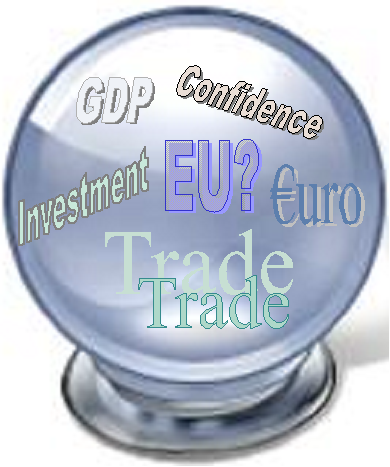 The UK would no longer have a vote in the EU on its future direction. Such an outcome is unlikely, however, given that a central argument of the Leave camp has been for the UK to be able to control migration and not to have to pay contributions to the EU budget.
The UK would no longer have a vote in the EU on its future direction. Such an outcome is unlikely, however, given that a central argument of the Leave camp has been for the UK to be able to control migration and not to have to pay contributions to the EU budget.
It is quite likely, then, that the UK would trade with the EU on the basis of individual trade deals. This could involve tariffs on exports to the EU and would involve being subject to EU regulations. Such negotiations could be protracted and potentially extend beyond the two-year deadline under Article 50. But for this to happen, there would have to be agreement by the remaining 27 EU countries. At the end of the two-year process, when the UK exits the EU, any unresolved negotiations would default to the terms for other countries outside the EU. EU treaties would cease to apply to the UK.
It is quite likely, then, that the UK would face trade restrictions on its exports to the EU, which would adversely affect firms for whom the EU is a significant market. 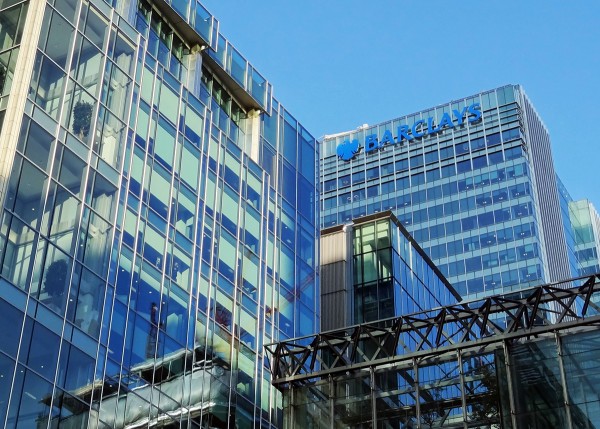 Where practical, some firms may thus choose to relocate from the UK to the EU or move business and staff from UK offices to offices within the EU. This is particularly relevant to the financial services sector. As the second Economist article explains:
Where practical, some firms may thus choose to relocate from the UK to the EU or move business and staff from UK offices to offices within the EU. This is particularly relevant to the financial services sector. As the second Economist article explains:
In the longer run … Britain’s financial industry could face severe difficulties. It thrives on the EU’s ‘passport’ rules, under which banks, asset managers and other financial firms in one member state may serve customers in the other 27 without setting up local operations. …
Unless passports are renewed or replaced, they will lapse when Britain leaves. A deal is imaginable: the EU may deem Britain’s regulations as ‘equivalent’ to its own. But agreement may not come easily. French and German politicians, keen to bolster their own financial centres and facing elections next year, may drive a hard bargain. No other non-member has full passport rights.
But if long-term economic effects are hard to predict, short-term effects are happening already.
The pound fell sharply as soon as the results of the referendum became clear. By the end of the day it had depreciated by 7.7% against the dollar and 5.7% against the euro. A lower pound will make imports more expensive and hence will drive up prices and reduce the real value of sterling. On the other had, it will make exports cheaper and act as a boost to exports.
 If inflation rises, then the Bank of England may raise interest rates. This could have a dampening effect on the economy, which in turn would reduce tax revenues. The government, if it sticks to its fiscal target of achieving a public-sector net surplus by 2020 (the Fiscal Mandate), may then feel the need to cut government expenditure and/or raise taxes. Indeed, the Chancellor argued before the vote that such an austerity budget may be necessary following a vote to leave.
If inflation rises, then the Bank of England may raise interest rates. This could have a dampening effect on the economy, which in turn would reduce tax revenues. The government, if it sticks to its fiscal target of achieving a public-sector net surplus by 2020 (the Fiscal Mandate), may then feel the need to cut government expenditure and/or raise taxes. Indeed, the Chancellor argued before the vote that such an austerity budget may be necessary following a vote to leave.
Higher interest rates could also dampen house prices as mortgages became more expensive or harder to obtain. The exception could be the top end of the market where a large proportion are buyers from outside the UK whose demand would be boosted by the depreciation of sterling.
But given that the Bank of England’s remit is to target inflation in 24 month’s time, it is possible that any spike in inflation is temporary and this may give the Bank of England leeway to cut Bank Rate from 0.5% to 0.25% or even 0% and/or to engage in further quantitative easing.
One major worry is that uncertainty may discourage investment by domestic companies. It could also discourage inward investment, and international companies many divert investment to the EU. Already some multinationals have indicated that they will do just this. Shares in banks plummeted when the results of the vote were announced.
Uncertainty is also likely to discourage consumption of durables and other big-ticket items. The fall in aggregate demand could result in recession, again necessitating an austerity budget if the Fiscal Mandate is to be adhered to.
We live in ‘interesting’ times. Uncertainty is rarely good for an economy. But that uncertainty could persist for some time.
Articles
Why Brexit is grim news for the world economy The Economist (24/6/16)
International banking in a London outside the European Union The Economist (24/6/16)
What happens now that Britain has voted for Brexit The Economist (24/6/16)
Britain and the EU: A tragic split The Economist (24/6/16)
Brexit in seven charts — the economic impact Financial Times, Chris Giles (21/6/16)
How will Brexit result affect France, Germany and the rest of Europe? Financial Times, Anne-Sylvaine Chassany, Stefan Wagstyl, Duncan Robinson and Richard Milne (24/6/16)
How global markets are reacting to UK’s Brexit vote Financial Times, Michael Mackenzie and Eric Platt (24/6/16)
Brexit: What happens now? BBC News (24/6/16)
How will Brexit affect your finances? BBC News, Brian Milligan (24/6/16)
Brexit: what happens when Britain leaves the EU Vox, Timothy B. Lee (25/6/16)
An expert sums up the economic consensus about Brexit. It’s bad. Vox, John Van Reenen (24/6/16)
How will the world’s policymakers respond to Brexit? The Telegraph, Peter Spence (24/6/16)
City of London could be cut off from Europe, says ECB official The Guardian, Katie Allen (25/6/16)
Multinationals warn of job cuts and lower profits after Brexit vot The Guardian, Graham Ruddick (24/6/16)
How will Brexit affect Britain’s trade with Europe? The Guardian, Dan Milmo (26/6/16)
Britain’s financial sector reels after Brexit bombshell Reuters, Sinead Cruise, Andrew MacAskill and Lawrence White (24/6/16)
How ‘Brexit’ Will Affect the Global Economy, Now and Later New York Times, Neil Irwin (24/6/16)
Brexit results: Spurned Europe wants Britain gone Sydney Morning Herald, Nick Miller (25/6/16)
Economists React to ‘Brexit’: ‘A Wave of Economic and Political Uncertainty’ The Wall Street Journal, Jeffrey Sparshott (24/6/16)
Brexit wound: UK vote makes EU decline ‘practically irreversible’, Soros says CNBC, Javier E. David (25/6/16)
One month on, what has been the impact of the Brexit vote so far? The Guardian (23/7/16)
Questions
- What are the main elements of a balance of payments account? Changes in which elements caused the depreciation of the pound following the Brexit vote? What elements of the account, in turn, are likely to be affected by the depreciation?
- What determines the size of the effect on the current account of the balance of payments of a depreciation? How might long-term effects differ from short-term ones?
- Is it possible for firms to have access to the single market without allowing free movement of labour?
- What assumptions were made by the Leave side about the economic effects of Brexit?
- Would it be beneficial to go for a ‘free trade’ option of abolishing all import tariffs if the UK left the EU? Would it mean that UK exports would face no tariffs from other countries?
- What factors are likely to drive the level of investment in the UK (a) by domestic companies trading within the UK and (b) by multinational companies over the coming months?
- What will determine the course of monetary policy over the coming months?
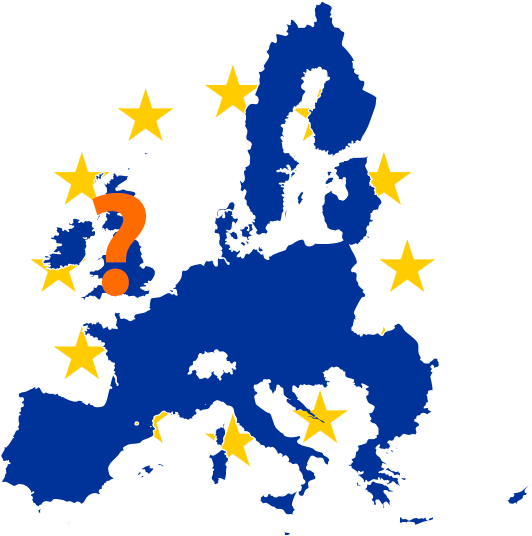 Many of the arguments used by both sides in the referendum debate centre on whether there will be a net economic gain from either remaining in or leaving the EU. This involves forecasting.
Many of the arguments used by both sides in the referendum debate centre on whether there will be a net economic gain from either remaining in or leaving the EU. This involves forecasting.
Forecasting the economic impact of the decision, however, is difficult, especially in the case of a leave vote, which would involve substantial change and uncertainty.
First, the effects of either remaining or leaving may be very different in the long run from the short run, and long-run forecasts are highly unreliable, as the economy is likely to be affected by so many unpredictable events – few people, for example, predicted the financial crisis of 2007–8.
Second, the effects of leaving depend on the nature of any future trading relationships with the EU. Various possibilities have been suggested, including ‘the Norwegian model’, where Britain leaves the EU, but joins the European Economic Area, giving access to the single market, but removing regulation in some key areas, such as fisheries and home affairs.  Another possibility is ‘the Swiss model’, where the UK would negotiate trade deals on an individual basis. Another would be ‘the Turkish model’ where the UK forms a customs union with the EU. At the extreme, the UK could make a complete break from the EU and simply use its membership of the WTO to make trade agreements.
Another possibility is ‘the Swiss model’, where the UK would negotiate trade deals on an individual basis. Another would be ‘the Turkish model’ where the UK forms a customs union with the EU. At the extreme, the UK could make a complete break from the EU and simply use its membership of the WTO to make trade agreements.
Nevertheless, despite the uncertainty, economists have ventured to predict the effects of remaining or leaving. These are not precise predictions for the reasons given above. Rather they are based on likely assumptions.
In a poll of 100 economists for the Financial Times, ‘almost three-quarters thought leaving the EU would damage the country’s medium-term outlook, nine times more than the 8 per cent who thought the country would benefit from leaving’. Most fear damage to financial markets in the UK and to inward foreign direct investment.
Despite the barrage of pessimistic forecasts by economists about a British exit, there is a group of eight economists in favour of Brexit. They claim that leaving the EU would lead to a stronger economy, with higher GDP, a faster growth in real wages, lower unemployment and a smaller gap between imports and exports. The main argument they use to support their claims is that the UK would be more able to pursue trade creation freed from various EU rules and regulations.
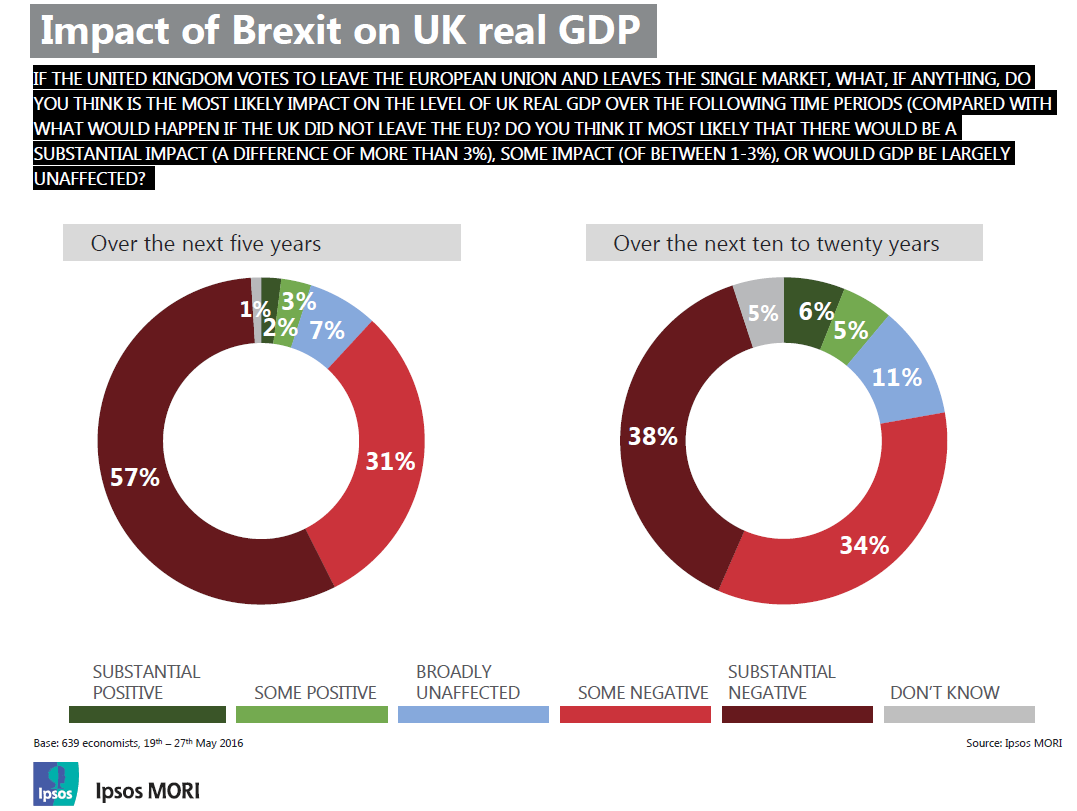 Then, less than four weeks before the vote, a poll of economists who are members of the Royal Economic Society and the Society of Business Economists came out strongly in favour of continued membership of the EU. Of the 639 respondents, 72 per cent thought that the most likely impact of Brexit on UK real GDP would be negative over the next 10 to 20 years; and 88 per cent thought the impact on GDP would be negative in the next five years (see chart: click to enlarge).
Then, less than four weeks before the vote, a poll of economists who are members of the Royal Economic Society and the Society of Business Economists came out strongly in favour of continued membership of the EU. Of the 639 respondents, 72 per cent thought that the most likely impact of Brexit on UK real GDP would be negative over the next 10 to 20 years; and 88 per cent thought the impact on GDP would be negative in the next five years (see chart: click to enlarge).
Of those stating that a negative impact on GDP in the next 5 years would be most likely, a majority cited loss of access to the single market (67%) and increased uncertainty leading to reduced investment (66%).
The views of the majority of economists accord with those of various organisations. Domestic ones, such as the Bank of England, the Treasury (see the blog Brexit costs), the Institute for Fiscal Studies and the National Institute for Economic and Social Research (NIESR) all warn that Brexit would be likely to result in lower growth – possibly a recession – increased unemployment, a fall in the exchange rate and higher prices and that greater economic uncertainty would damage investment.
International organisations, such as the OECD, the IMF and the WTO, also argue that leaving the EU would create great uncertainty over future trade relations and access to the Single Market and would reduce inward foreign direct investment and the flow of skills.
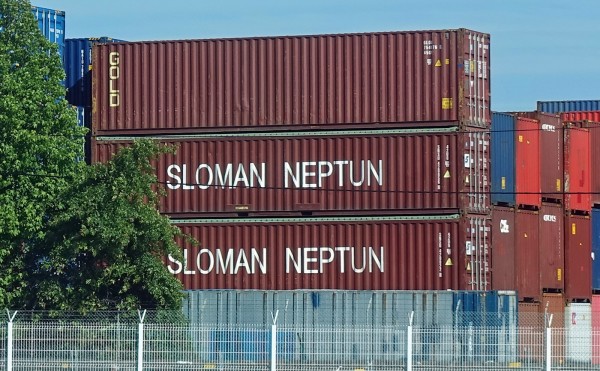 But the forecasts of all these organisations depend on their assumptions about trade relations and that, in the event of the UK leaving the EU, would depend on the outcome of trade negotiations. The Leave campaign argues that other countries would want to trade with the UK and that therefore leaving would not damage trade. The Remain campaign argues that the EU would not wish to be generous to the UK for fear of encouraging other countries to leave the EU and that, anyway, the process of decoupling from the EU and negotiating new trade deals would take many years and, in the meantime, the uncertainty would be damaging to investment and growth.
But the forecasts of all these organisations depend on their assumptions about trade relations and that, in the event of the UK leaving the EU, would depend on the outcome of trade negotiations. The Leave campaign argues that other countries would want to trade with the UK and that therefore leaving would not damage trade. The Remain campaign argues that the EU would not wish to be generous to the UK for fear of encouraging other countries to leave the EU and that, anyway, the process of decoupling from the EU and negotiating new trade deals would take many years and, in the meantime, the uncertainty would be damaging to investment and growth.
The articles linked below looks at the economic arguments about Brexit and reflect the range of views of economists. Several are from ‘The Conversation’ as these are by academic economists. Although some economists are in favour of Brexit, the vast majority support the Remain side in the debate.
Articles
EU referendum: Pros and cons of Britain voting to leave Europe The Week (4/5/16)
The fatal contradictions in the Remain and Leave camps The Economist (3/6/16)
Four reasons a post-Brexit UK can’t copy Norway or Switzerland The Telegraph, Andrew Sentance (10/6/16)
What will Brexit do to UK trade? Independent, Ben Chu (2/6/16)
Leavers may not like economists but we are right about Brexit Institute for Fiscal Studies, Paul Johnson (9/6/15)
Why Brexit supporters should take an EU-turn – just like I did The Conversation, Wilfred Dolfsma (8/6/16)
The economic case for Brexit The Conversation, Philip B. Whyman (28/4/16)
Fact Check: do the Treasury’s Brexit numbers add up? The Conversation, Nauro Campos (20/4/16)
Which Brexit forecast should you trust the most? An economist explains The Conversation, Nauro Campos (25/4/16)
Why is the academic consensus on the cost of Brexit being ignored? The Conversation, Simon Wren-Lewis (17/5/16)
How Brexit would reduce foreign investment in the UK – and why that matters The Conversation, John Van Reenen (15/4/16)
The consensus on modelling Brexit NIESR, Jack Meaning, Oriol Carreras, Simon Kirby and Rebecca Piggott (23/5/16)
Reports, Press Conferences, etc.
Economists’ forecasts: Brexit would damage growth Financial Times, Chris Giles and Emily Cadman (3/1/16)
The Economy After Brexit, Economists for Brexit
Economists’ Views on Brexit Ipsos MORI (28/5/16)
Inflation Report Bank of England (May 2016)
EU referendum: HM Treasury analysis key facts HM Treasury (18/4/16)
Brexit and the UK’s public finances Institute for Fiscal Studies, Carl Emmerson , Paul Johnson , Ian Mitchell and David Phillips (25/5/16)
The Long and the Short of it: What price UK Exit from the EU? NIESR, Oriol Carreras, Monique Ebell, Simon Kirby, Jack Meaning, Rebecca Piggott and James Warren (12/5/16)
The Economic Consequences of Brexit: A Taxing Decision OECD (27/4/16)
Transcript of the Press Conference on the Release of the April 2016 World Economic Outlook IMF (12/4/16)
Macroeconomic implications of the United Kingdom leaving the Euroepan Union IMF Country Report 16/169 (1/6/16)
WTO warns on tortuous Brexit trade talks Financial Times, Shawn Donnan (25/5/16)
Questions
- Summarise the main economic arguments of the Remain side.
- What assumptions are made by the Remain side about Brexit?
- Summarise the main economic arguments of the Leave side.
- What assumptions are made by the Leave side about Brexit?
- Assess the realism of the assumptions of the two sides.
- If the UK exited the EU, would it be possible to continue gaining the benefits of the single market while restricting the free movement of labour?
- Would it be beneficial to go for a ‘free trade’ option of abolishing all import tariffs if the UK left the EU? Would it mean that UK exports would face no tariffs from other countries?
- If forecasting is unreliable, does this mean that nothing can be said about the costs and benefits of Brexit? Explain.
 The Treasury has published a paper analysing the costs of Britain leaving the EU. Its central assumption is that the UK would negotiate a bilateral trade deal with the EU similar to that between Canada and the EU. Under this assumption the Treasury estimates that, by 2030, GDP would be 6.2% lower than if the UK had remained in the EU, meaning that the average household would be £4300 per year worse off than it would otherwise have been. The analysis also finds that there would be a total reduction in tax receipts of £36 billion per year – far greater than any savings from lower contributions to the EU budget.
The Treasury has published a paper analysing the costs of Britain leaving the EU. Its central assumption is that the UK would negotiate a bilateral trade deal with the EU similar to that between Canada and the EU. Under this assumption the Treasury estimates that, by 2030, GDP would be 6.2% lower than if the UK had remained in the EU, meaning that the average household would be £4300 per year worse off than it would otherwise have been. The analysis also finds that there would be a total reduction in tax receipts of £36 billion per year – far greater than any savings from lower contributions to the EU budget.
Not surprisingly the ‘Vote Remain’ campaign for the UK to stay in the EU has welcomed the analysis, seeing it as strong evidence in support of their case. Also, not surprisingly, the Vote Leave campaign has questioned both the analysis and the assumptions on which it is based.
 The Treasury analysis looks at three possible scenarios: (a) a Canada-style bilateral arrangement (the central estimate); (b) the UK becoming a member or the European Economic Area – the ‘Norwegian model’ (according to the Treasury, this would reduce GDP by 3.8%); (c) no specific deal with the EU, with the UK simply having the same access to the EU as any other country that is a mamber of the WTO (this would reduce GDP by 7.5%). Thus the Norwegian model would probably result in a smaller reduction in growth, but the UK would still continue to make contributions to the EU budget and have to allow free movement of labour. Only in option (c) would it have total control over migration. Each of the estimates has a margin of error, giving a range for the reduction in GDP across the three scenarios from 3.4% to 9.5%.
The Treasury analysis looks at three possible scenarios: (a) a Canada-style bilateral arrangement (the central estimate); (b) the UK becoming a member or the European Economic Area – the ‘Norwegian model’ (according to the Treasury, this would reduce GDP by 3.8%); (c) no specific deal with the EU, with the UK simply having the same access to the EU as any other country that is a mamber of the WTO (this would reduce GDP by 7.5%). Thus the Norwegian model would probably result in a smaller reduction in growth, but the UK would still continue to make contributions to the EU budget and have to allow free movement of labour. Only in option (c) would it have total control over migration. Each of the estimates has a margin of error, giving a range for the reduction in GDP across the three scenarios from 3.4% to 9.5%.
The Treasury used a three-stage process to arrive at its conclusions, as explained in the FT article below:
First, it uses gravity models to estimate the effect of different trade relationships on the quantity of trade and foreign direct investment. Gravity models take into account how close countries are to each other geographically, as well as their historical links, rather than assuming that trade flows to wherever the lowest tariffs are.
Second, it uses external academic results to estimate the consequences for productivity – the efficiency of the UK economy – from different levels of trade and foreign direct investment.
Third, it plugs the productivity numbers unto a global economic model run by the National Institute of Economic and Social Research to estimate the long-run differences in national income and prosperity.
Clearly there is large-scale uncertainty over any forecasts 14 years ahead, especially when the relationship with the EU and other countries post-EU exit can only be roughly estimated. The question is whether the assumptions are reasonable and whether there would be substantial costs from Brexit, but not necessarily of £4300 per household.
The following articles look at the analysis and its assumptions. Unlike many newspaper articles, which clearly have an agenda, these articles are relatively unbiased and try to assess the arguments. Of course, it would be difficult to be totally unbiased and it would be a good idea to try to spot any biases in each of the articles.
Articles
Treasury’s Brexit analysis: what it says — and what it doesn’t Financial Times, Chris Giles (18/4/16)
A Treasury analysis suggests the costs of Brexit would be high The Economist (18/4/16)
George Osborne says UK would lose £36bn in tax receipts if it left EU The Guardian, Anushka Asthana and Tom Clark (18/4/16)
Will each UK household be £4,300 worse off if the UK leaves the EU? The Guardian, Larry Elliott (18/4/16)
FactCheck Q&A: can we trust the Treasury on Brexit? Channel 4 News, Patrick Worrall (18/4/16)
Reality Check: Would Brexit cost your family £4,300? BBC News, Anthony Reuben (18/4/16)
Brexit sparks outbreak of agreement among economists Financial Times, Chris Giles (27/4/16)
Treasury analysis
EU referendum: HM Treasury analysis key facts HM Treasury (18/4/16)
HM Treasury analysis: the long-term economic impact of EU membership and the alternatives HM Treasury (18/4/16)
Questions
- Would households actually be poorer if the Treasury’s forecasts are correct?
- What alternative trade arrangements with the EU would be possible if the UK left the EU?
- What are the Treasury model’s main weaknesses?
- What considerations are UK voters likely to take into account in the referendum which are not included in the Treasury analysis?
- Make out the case for supporting the analysis of the Treasury.
- Make out the case for rejecting the analysis of the Treasury.
 According to the law of comparative advantage, trade can benefit all countries if they export goods which they can produce at lower opportunity costs than their trading partners. Trade enables all countries to consume beyond their production possibility frontier. What is more, trade can increase competition, which encourages firms to be more efficient.
According to the law of comparative advantage, trade can benefit all countries if they export goods which they can produce at lower opportunity costs than their trading partners. Trade enables all countries to consume beyond their production possibility frontier. What is more, trade can increase competition, which encourages firms to be more efficient.
That trade is beneficial has been generally accepted by governments around the world since the Second World War, with the General Agreement on Tariffs and Trade (GATT) and then the World Trade Organization (WTO) advocating the dismantling of trade barriers. Countries have participated in a series of trade ’rounds’, such as the Uruguay Round (1986–94) and most recently the Doha Round (2001–15). But since the financial crisis of 2008, there has been waning enthusiasm for freer trade and growing calls to protect strategic and/or vulnerable industries. To some extent this mirrors the growth in protection after the Great Depression of the early 1930s as countries sought to boost their own industries.
After some progress in the Doha round talks in Nairobi in December 2015, the talks effectively marked the end of a fourteen-year road for the round (see also). There was a failure to agree on a number of items and chances of resurrecting the talks seem slim.
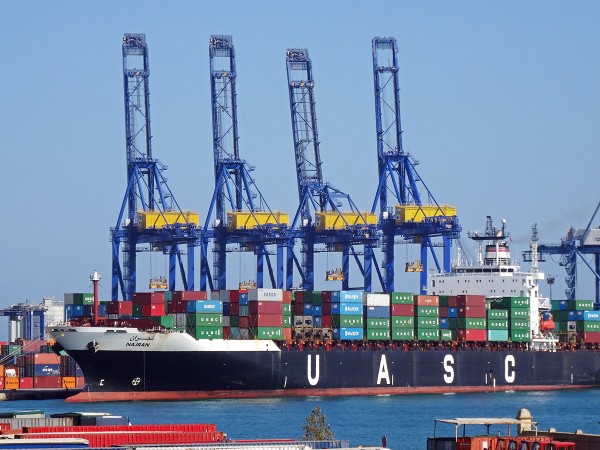 The classic response to calls for protection is that it can lead to a trade war, with a net loss in global output as less efficient domestic industries are shielded from competition from lower-cost imports. Consumers lose from no longer having access to cheaper imported goods. Trade wars, it is argued, are a negative sum game. Any gains to one country are more than offset by losses elsewhere. In fact, it is likely that all countries will lose.
The classic response to calls for protection is that it can lead to a trade war, with a net loss in global output as less efficient domestic industries are shielded from competition from lower-cost imports. Consumers lose from no longer having access to cheaper imported goods. Trade wars, it is argued, are a negative sum game. Any gains to one country are more than offset by losses elsewhere. In fact, it is likely that all countries will lose.
One argument for protection recognises the efficiency gains from free trade, but argues that current trade is distorted. For example, countries may subsidise the export of products in which they have a comparative disadvantage and dump them on the rest of the world. The WTO recognises this as a legitimate argument for tariffs, if they are used to offset the effect of the subsidies and make import prices more reflective of the cost of production.
But increasingly arguments go beyond this. Industries that are regarded as strategic to a country’s future, such as the steel industry or agriculture, are seen as warranting protection. With protection, investment may flow to such industries, making them more efficient and even gaining a comparative advantage at some point in the future.
Then there is the question of income distribution. Trade with poor countries may help to close the gap somewhat between rich and poor countries. The reason is that poor countries, with an abundance of labour, are likely to have a comparative advantage in labour-intensive products. The demand for exports of such products will help to drive up wages in such countries. However, income distribution within the rich countries may become less equal. Cheap imports from developing countries may depress the wages of unskilled or low-skilled workers in the rich countries.
Another argument concerns the devastation caused to communities by the closure of plants which are major employers. Workers made redundant may find it hard to find alternative employment, especially if their skills are specific to the plant that has closed. At least in the short term, it is argued that such industries warrant protection to allow time for alternative employers to be attracted into the area.
Arguments such as these are being used today in many countries as they struggle with slowing growth in China, a glut of global resources and overcapacity in certain industries.
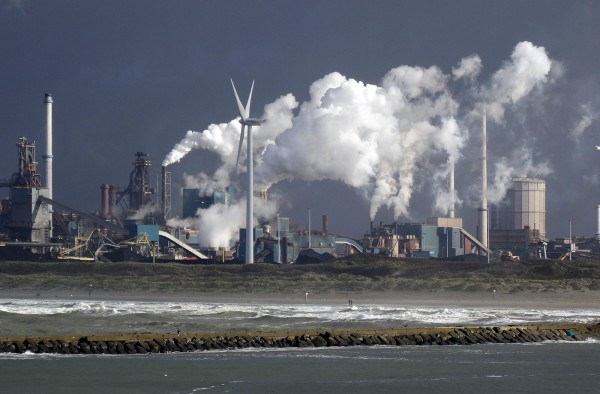 The steel industry is a case in point. The announcement by Tata Steel that it intends to close the Port Talbot steel works has been met with consternation and calls for protection against subsidised Chinese steel imports. The USA already imposes tariffs of 256% on corrosion-resistant Chinese steel. The EU has proposed raising tariffs on Chinese steel to the full amount of the subsidy, but the UK has blocked this, not wishing to trigger a trade war with China. In the meantime, China has announced the imposition of a tariff of 46% on a particular type of hi-tech steel imported from the EU.
The steel industry is a case in point. The announcement by Tata Steel that it intends to close the Port Talbot steel works has been met with consternation and calls for protection against subsidised Chinese steel imports. The USA already imposes tariffs of 256% on corrosion-resistant Chinese steel. The EU has proposed raising tariffs on Chinese steel to the full amount of the subsidy, but the UK has blocked this, not wishing to trigger a trade war with China. In the meantime, China has announced the imposition of a tariff of 46% on a particular type of hi-tech steel imported from the EU.
On the other side of the Atlantic, there have been growing protectionist calls from presidential front runners. Donald Trump and Ted Cruz on the Republican side, and Bernie Sanders and now Hilary Clinton on the Democratic side, are opposed to the trade agreement that President Obama has been seeking with the EU – the Transatlantic Trade and Investment Partnership (TTIP). Donald Trump has proposed imposing tariffs of 45% on all Chinese imports.

The following articles look at the growing calls for protection, especially against China, and at the arguments about what should be done to protect the UK and EU steel industry.
Articles
Defiant China slaps steel tariffs on Britain as trade war looms The Telegraph, Ambrose Evans-Pritchard (1/4/16)
China’s soaring steel exports may presage a trade war, The Economist (9/12/15)
Trade, at what price? The Economist (30/3/16)
Free trade in America: Open argument The Economist (2/4/16)
Can the British steel industry be saved? Financial Times (2/4/16)
Steel crisis: UK government plays down China tariff fears BBC News (2/4/16)
The dogmas destroying UK steel also inhibit future economic growth The Observer, WIll Hutton (3/4/16)
UK accused of leading efforts to block limits to Chinese steel dumping The Guardian, Frances Perraudin (1/4/16)
There’s always an excuse to justify suspending free trade – Tata is the latest The Telegraph, Allister Heath (1/4/16)
Can one of the world’s top economies live without making steel? Bloomberg, Thomas Biesheuvel (1/4/16)
Trade policy is no longer just for political nerds: it matters in the UK and US The Guardian, Larry Elliott (27/3/16)
Steel shrivels while Britain’s balance of payments crisis grows The Observer, WIlliam Keegan (3/4/16)
Trump’s tariff plan could boomerang, spark trade wars with China, Mexico Reuters, David Lawder and Roberta Rampton (24/3/16)
Analysis: A Trump trade war could cost the U.S. millions of jobs Daily Herald (Chicago), Jim Tankersley (3/4/16)
Questions
- What is meant by the ‘law of comparative advantage’? Does the law imply that countries will always gain from totally free trade?
- Demonstrate the gains for each of two countries which choose to trade with each other (see, for example, pages 711–3 in Economics, 9th edition).
- What is meant by ‘strategic trade theory’? How would such theory relate to the case of steel production in south Wales?
- What are the arguments for and against the EU imposing tariffs on Chinese steel imports equal to the subsidy given by the Chinese government?
- Is protectionism always a negative sum game? Explain.
- Assess the validity of various arguments for protection.
- Why did it prove impossible to complete the Doha round?
- What is meant by the ‘Transatlantic Trade and Investment Partnership (TTIP)’? Why is there so much opposition to it?
- Are bilateral trade deals, such as the TTIP, the best way of moving forward in reaping the gains from freer trade?
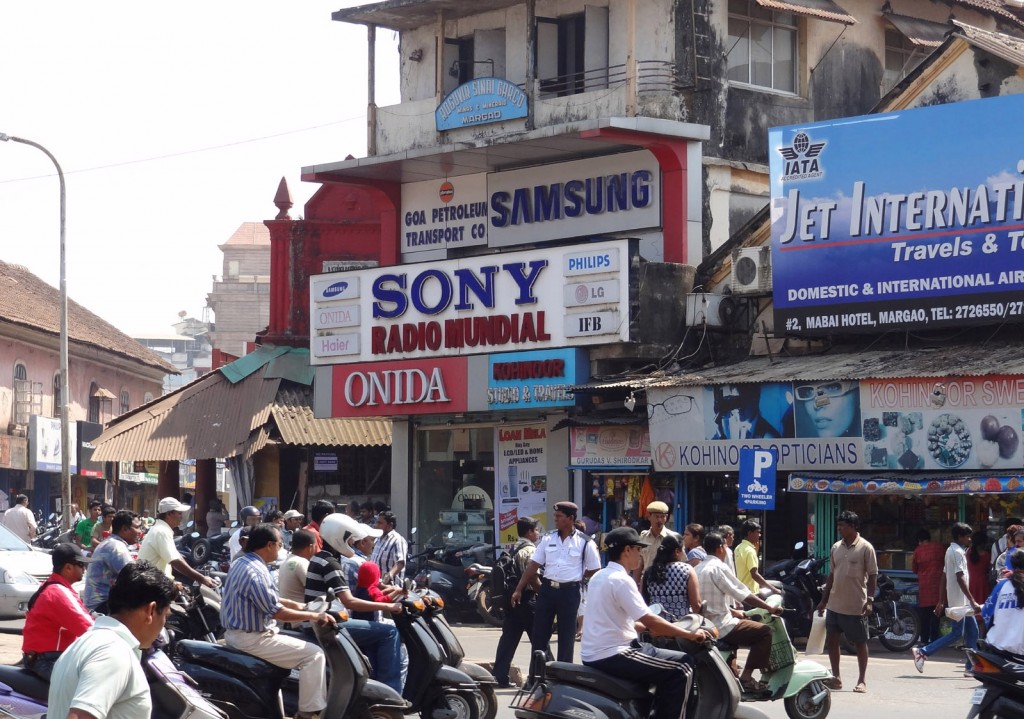 Are emerging markets about to experience a credit crunch? Slowing growth in China and other emerging market economies (EMEs) does not bode well. Nor does the prospect of rising interest rates in the USA and the resulting increase in the costs of servicing the high levels of dollar-denominated debt in many such countries.
Are emerging markets about to experience a credit crunch? Slowing growth in China and other emerging market economies (EMEs) does not bode well. Nor does the prospect of rising interest rates in the USA and the resulting increase in the costs of servicing the high levels of dollar-denominated debt in many such countries.
According to the Bank for International Settlements (BIS) (see also), the stock of dollar-denominated debt in emerging market economies has doubled since 2009 and this makes them vulnerable to tighter US monetary policy.
Weaker financial market conditions combined with an increased sensitivity to US rates may heighten the risk of negative spillovers to EMEs when US policy is normalised. …
Despite low interest rates, rising debt levels have pushed debt service ratios for households and firms above their long-run averages, particularly since 2013, signalling increased risks of financial crises in EMEs.
But there is another perspective. Many emerging economies are pursuing looser monetary policy and this, combined with tighter US monetary policy, is causing their exchange rates against the dollar to depreciate, thereby increasing their export competitiveness. At the same time, more rapid growth in the USA and some EU countries, should also help to stimulate demand for their exports.
Also, in recent years there has been a large growth in trade between emerging economies – so-called ‘South–South trade’. Exports from developing countries to other developing countries has grown from 38% of developing countries’ exports in 1995 to over 52% in 2015. With technological catch-up taking place in many of these economies and with lower labour and land costs, their prospects look bright for economic growth over the longer term.
These two different perspectives are taken in the following two articles from the Telegraph. The first looks at the BIS’s analysis of growing debt and the possibility of a credit crunch. The second, while acknowledging the current weakness of many emerging economies, looks at the prospects for improving growth over the coming years.
Articles
‘Uneasy’ market calm masks debt timebomb, BIS warns The Telegraph, Szu Ping Chan (6/12/15)
Why emerging markets will rise from gloom to boom The Telegraph, Liam Halligan (5/12/15)
Questions
- How does an improving US economy impact on emerging market economies?
- Will the impact of US monetary policy on exchange rates be adverse or advantageous for emerging market economies?
- What forms does dollar-denominated debt take in emerging economies?
- Why has south–south trade grown in recent years? Is it consistent with the law of comparative advantage?
- Why is growth likely to be higher in emerging economies than in developed economies in the coming years?
 The UK has voted to leave the EU by 17 410 742 votes (51.9% or 37.4% of the electorate) to 16 141 241 votes (48.1% or 34.7% of the electorate). But what will be the economic consequences of the vote?
The UK has voted to leave the EU by 17 410 742 votes (51.9% or 37.4% of the electorate) to 16 141 241 votes (48.1% or 34.7% of the electorate). But what will be the economic consequences of the vote? The UK would no longer have a vote in the EU on its future direction. Such an outcome is unlikely, however, given that a central argument of the Leave camp has been for the UK to be able to control migration and not to have to pay contributions to the EU budget.
The UK would no longer have a vote in the EU on its future direction. Such an outcome is unlikely, however, given that a central argument of the Leave camp has been for the UK to be able to control migration and not to have to pay contributions to the EU budget. Where practical, some firms may thus choose to relocate from the UK to the EU or move business and staff from UK offices to offices within the EU. This is particularly relevant to the financial services sector. As the second Economist article explains:
Where practical, some firms may thus choose to relocate from the UK to the EU or move business and staff from UK offices to offices within the EU. This is particularly relevant to the financial services sector. As the second Economist article explains: If inflation rises, then the Bank of England may raise interest rates. This could have a dampening effect on the economy, which in turn would reduce tax revenues. The government, if it sticks to its fiscal target of achieving a public-sector net surplus by 2020 (the Fiscal Mandate), may then feel the need to cut government expenditure and/or raise taxes. Indeed, the Chancellor argued before the vote that such an austerity budget may be necessary following a vote to leave.
If inflation rises, then the Bank of England may raise interest rates. This could have a dampening effect on the economy, which in turn would reduce tax revenues. The government, if it sticks to its fiscal target of achieving a public-sector net surplus by 2020 (the Fiscal Mandate), may then feel the need to cut government expenditure and/or raise taxes. Indeed, the Chancellor argued before the vote that such an austerity budget may be necessary following a vote to leave.







